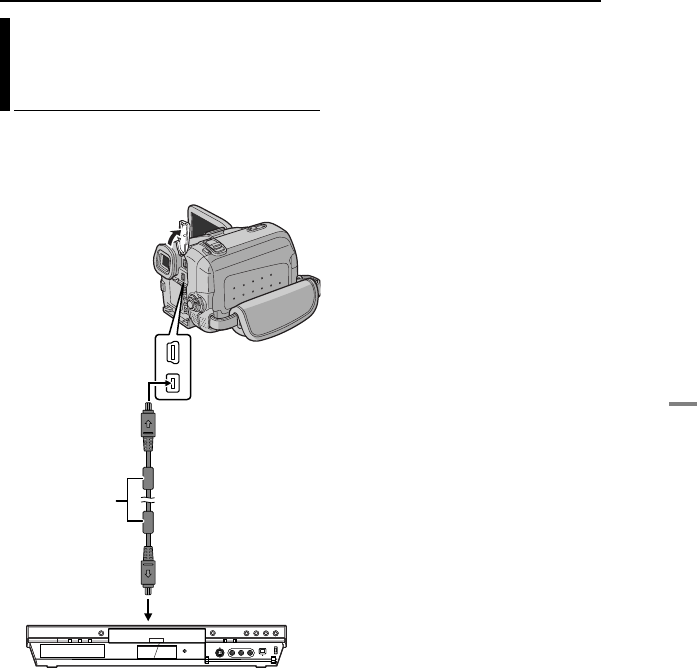
EN 41
EDITING
MasterPage: Start_Right
ADVANCED FEATURES
It is also possible to copy recorded scenes from
the camcorder onto another video unit equipped
with a DV connector. Since a digital signal is
sent, there is little if any image or sound
deterioration.
1 Make sure all units are turned off.
2 Connect this camcorder to a video unit
equipped with a DV input connector using a DV
cable as shown in the illustration.
3 Start playback on the camcorder. (੬ pg. 22)
4 At the point you want to start dubbing, start
recording on the video unit. (Refer to the video
unit’s instruction manual.)
5 To stop dubbing, stop recording on the video
unit, then stop playback on this camcorder.
NOTES:
● It is recommended to use the AC Adapter as
the power supply instead of the battery pack.
(੬ pg. 15)
● If a blank portion or disturbed image is played
back on the player during dubbing, the dubbing
may stop so that an unusual image is not dubbed.
● Even though the DV cable is connected correctly,
sometimes the image may not appear in step 4. If
this occurs, turn off the power and make
connections again.
● If “Playback Zoom” (੬ pg. 26) or “Playback
Special Effects” (੬ pg. 26) is attempted or
SNAPSHOT is pressed during playback, only the
original playback image recorded on the tape is
output from the DV OUT connector.
● When using a DV cable, be sure to use the
optional JVC VC-VDV204U DV cable.
Dubbing To A Video Unit Equipped
With A DV Connector (Digital
Dubbing)
Core filter
To DV OUT
DV cable (optional)
To DV IN
Video unit equipped with DV connector
GR-DF428AH_06Advanced.fm Page 41 Tuesday, March 22, 2005 2:01 PM
